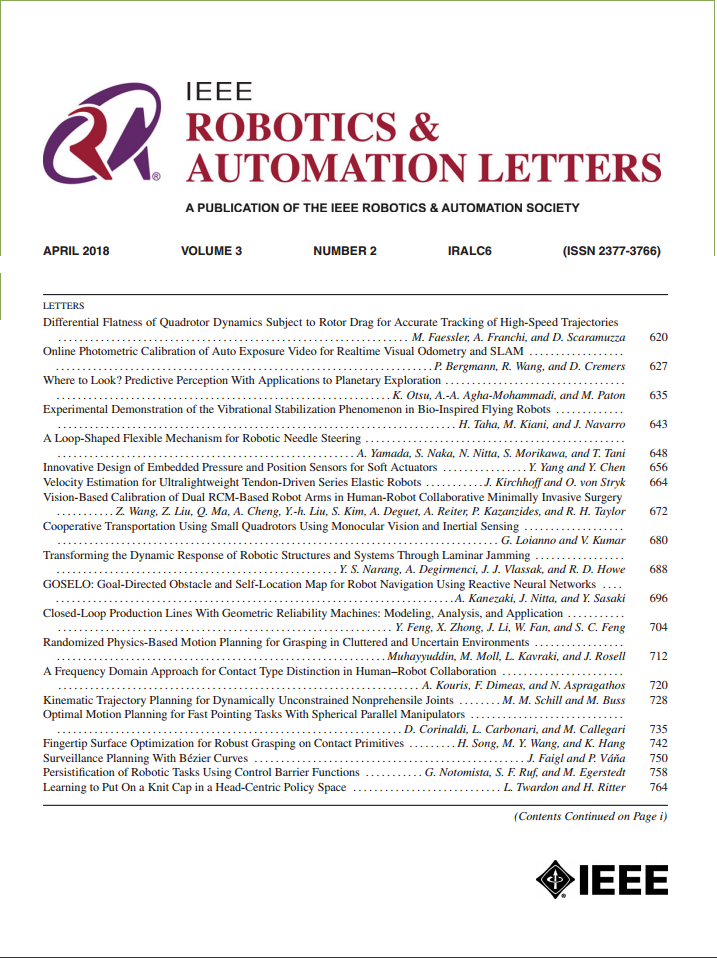Quantifying the Sim2Real Gap: Model-Based Verification and Validation in Autonomous Ground Systems
IF 4.6
2区 计算机科学
Q2 ROBOTICS
引用次数: 0
Abstract
Quantifying the Sim2Real gap is crucial for validating autonomous ground systems, enabling robust algorithm testing in simulations before real-world deployment, thereby reducing costs and time. This study introduces the Vinnicombe (求助全文
约1分钟内获得全文
求助全文
来源期刊

IEEE Robotics and Automation Letters
Computer Science-Computer Science Applications
CiteScore
9.60
自引率
15.40%
发文量
1428
期刊介绍:
The scope of this journal is to publish peer-reviewed articles that provide a timely and concise account of innovative research ideas and application results, reporting significant theoretical findings and application case studies in areas of robotics and automation.
 求助内容:
求助内容: 应助结果提醒方式:
应助结果提醒方式:


